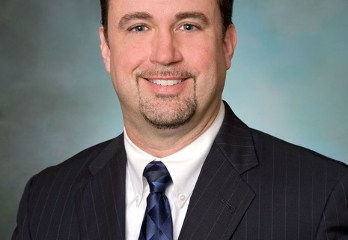Never mind the calendar. Spring has arrived, and this (formerly) young man’s fancy has turned to baseball.
Yes, I played hooky for a couple of days and went to Arizona to watch some spring training baseball.
But somewhere between Camelback Ranch and Surprise Stadium, my antennae picked up a development story with a Las Vegas angle.
The Cactus League is 70 years old this year and a raging success. A new study from FMR Associates in Tucson estimates the economy of metropolitan Phoenix enjoyed an economic impact of $810 million last year from the presence of 15 teams playing ball in the desert.
But all is not well, and not surprisingly the villain is money.
Arizona went all in on spring training in 1990 when the state Legislature agreed to dedicate the proceeds of a tax on rental cars to the cause. That produced a torrent of money that built a stadium in Mesa for the Chicago Cubs, then a revolutionary complex in Peoria that would be shared by the Seattle Mariners and the San Diego Padres.
Team after team dipped their hands in the honey pot. The Dodgers and White Sox came away with a $160 million gem of a complex called Camelback Ranch in Glendale.
Then in 2014 reality set it. A challenge to the use of rental car taxes produced a county court ruling that the state’s constitution prohibits using car taxes for anything but highways.
Don’t think too hard about why nobody noticed that problem for almost a quarter century. Rising economic tides can cause temporary blindness.
Suffice to say people have become worried about what happens when the long appeals route comes to an end.
Most immediately impacted are the Milwaukee Brewers, who are the guys left with the broken folding chair when the music stopped. The want a first-rate spring home, and their Maryvale stadium isn’t it. They’ve got some out-clauses in their leases and are floating an option of moving to Florida or even, yes, Las Vegas.
It seems the Brewers are just trying to leverage the best deal they can get, but it does raise an interesting question: Why not?
As a matter of public policy, I like the idea of finding other people to pay for a project you know you will otherwise have to fund yourself.
And that’s exactly where Clark County seems to find itself in the matter of Cashman Field. The place has outlived its career as a minor league ballpark; the highest and best use of the land is no longer baseball. Some miles west, in Summerlin, the owners of the Las Vegas 51s have identified a new site for a stadium. All that’s keeping this from happening is some millions of dollars.
So let’s do some back-of-the-napkin math. If Greater Phoenix sees an $810 million economic bump from 15 teams, what would two teams mean to Greater Las Vegas? Teams seems to like to share these days, and besides, given the distance, having two teams to play softens the pain of travel. Let’s round down and say it’s $100 million a year, although a tourist magnet like Vegas might do significantly better.
Given the state’s interest in stoking the economy, what will it kick in to help?
Any small change from the Convention and Visitors Authority or from a fraction of a penny bump in any of the many tourist taxes?
And of course there’s the money the 51s and the county have been kicking around.
A few million here and a few million there, and we’d have a plan.
Is it worthwhile?
Generally, I’m not a fan of the public kicking in money for stadiums that are really just homes for cash-soaked pro franchises. But this feels different.
This is really erecting a seasonal attraction that then can be used all summer by the minor league team. The seasonal attraction generates a tax increment that can be used for paying off bonds.
At least that was the calculation in Florida, which in 2013 created a fund that grants $50 million for a two-team stadium over 37.5 years ($20 million for a one-team stadium over 30 years).
Now, nobody has accused Floridians of doing well with numbers, either in schools or in vote tallying. But they do know their way around tourist attractions, and if it works for them, maybe we should take a serious look.
It feels a lot like a win-win.




